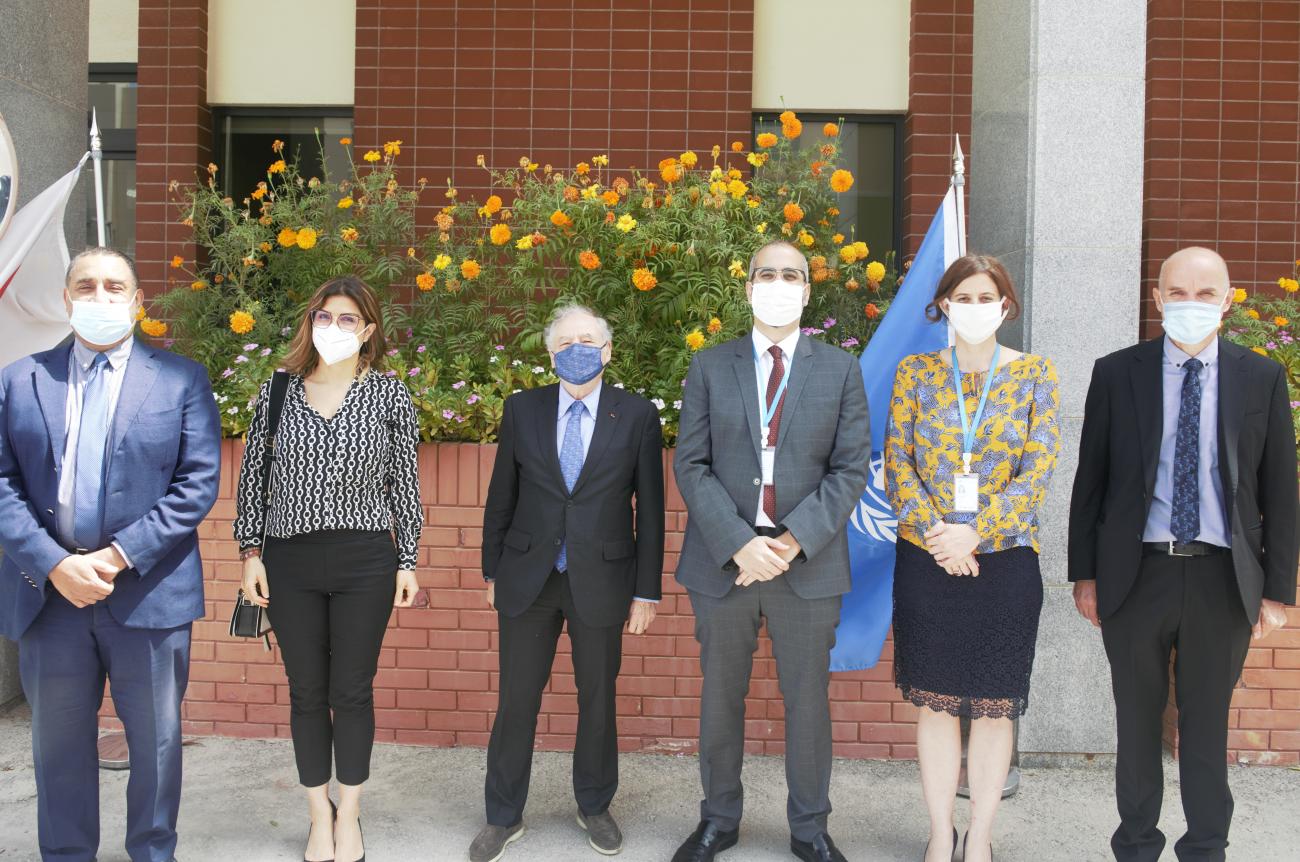Road traffic injuries threaten public health, social equity, and sustainable development.
On March 28, 2021, United Nations Special Envoy for Road Safety His Excellency Jean Todt was welcome by the United Nations Country Team at the UN House in Bahrain to raise awareness around the second Decade of Action for Road Safety (2021-2030) as part of the commitment by Member States to halve the number of road deaths and injuries, as well as to provide access to safe, affordable, accessible, and sustainable transport systems for all throughout the Decade of Action.
His arrival came in conjunction with the Gulf Cooperation Council (GCC) Traffic Week, a weeklong traffic safety awareness campaign held annually throughout the GCC in a bid to raise road safety awareness and decrease the number of traffic fatalities.
During his visit, HE Jean Todt was briefed by the United Nations Economic and Social Commission for Western Asia (UNESCWA) and the World Health Organization (WHO) on Road Safety in Bahrain. The main causes of injury crashes in Bahrain were noted to be caused by pedestrians and behavioral driving issues. Pedestrians accounted for a significant amount of fatalities in 2019 at 43%. Additionally, road crashes are a serious threat to youth, and in Bahrain number of deaths coincided with said fact as it was highest for the 15 - 29 year age group.
Road traffic injuries threaten public health, social equity, and sustainable development. To alleviate and lessen the burdens to society caused by traffic accidents, Youth For Road Safety (YOURS), a global organization aimed at actively engaging youth as major contributors to road safety solutions, notes five main risk factors that are leading causes of youth traffic injuries:
- Not Wearing Helmets: Helmets greatly decrease the likelihood of death and serious injury, as head injuries are the most common form of injury in motorcycle crashes.
- Speeding: Speeding increases the likelihood of severe injuries resultant from road crashes when compared to driving at lower speeds.
- Not Wearing Seatbelts: The simple act of putting on a seatbelt has saved more lives than any other form of intervention in preventing road traffic injuries.
- Distracted-Driving: Distractions can be visual (taking eyes off the road to look at a sign), physical (taking hands off the wheel to answer the phone), or mental (talking on the phone). Drivers who use their phones are statistically four times more likely to crash when compared to a person who is not distracted.
- Drunk-Driving: Driving under the influence of alcohol or narcotics decreases decision-making capacities and leads to higher rates of road crashes. Even a small amount of alcohol results in longer times to react, less coordination and increases risky driving behaviors.
As a result, it is imperative for the safety of all road users to ensure that drivers and passengers use road helmets, drive within the speed limit, wear seatbelts, drive without distractions and refrain from driving if under the influence of alcohol or narcotics.
For more information on the Decade of Action, please click here.
For more information on Youth for Road Safety, please click here.



